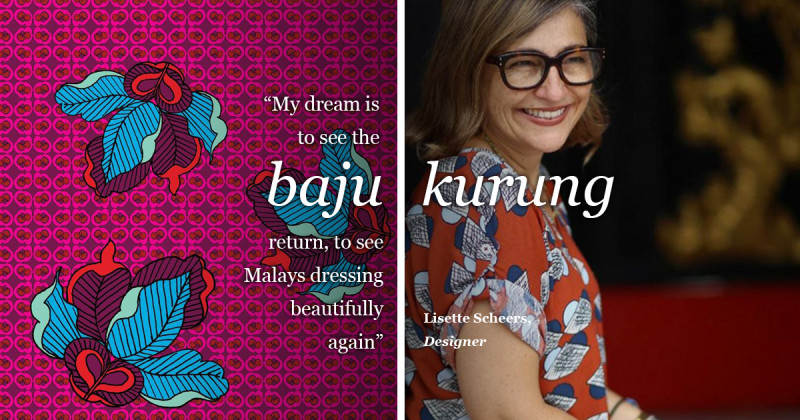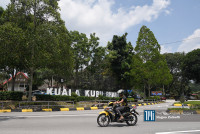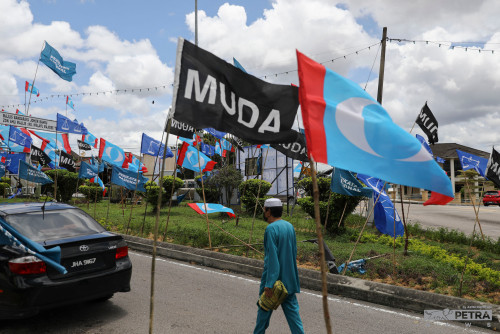SOCIAL media is a fractious space to be in, particularly when things go south after an opinion or action is brushed the wrong way, far from what it originally intends to achieve, among netizens.
The past weekend was an example of that. A transplanted Dutch expat/designer behind lifestyle brand Nala Design was slammed over a South China Morning Post interview. She had related her story of growing up as an expat, the inspiration behind her passion and what she set out to do.
It was a polarising article. While I sympathise with the designer’s musings of coming into adulthood feeling culturally detached but yearning for belonging, I was irritated by the display of social and economic ignorance on a matter that many dissatisfied readers have criticised simply as tone-deaf.
https://t.co/5o8hm9ckkJhttps://t.co/gc7a5mWbIp
— yq (@lyquid_parade) January 17, 2021
"My dream is to see the baju kurung return, to see Malays dressing beautifully again."
This is the – now-infamous – statement made by Lisette Scheers in the article. It made her as a target not just among the Malays, but people across diverse backgrounds, who have a problem with Westerners appropriating culture in a self-serving manner.
A throng of comments flooded Facebook, Instagram and Twitter.
Some have come to the defence of the designer. While others were outright unforgiving, calling Scheers out for having portrayed a distasteful ‘white saviour’ complex. It is a term difficult to challenge due to what has already been said and/or interpreted.
I've been thinking about Lisette Scheers and this now much-excoriated interview, and while I agree with pretty much all...
Posted by Preeta Samarasan on Saturday, January 16, 2021
Even the Raja Permaisuri Agong Tunku Hajah Azizah Aminah Maimunah Iskandariah pitched in. Her Majesty, who has been pushing Tenun Pahang to the forefront, has also recently stepped in to express her pride in wearing the baju kurung, and noted in her caption: “Yes I totally agree, be traditional and proud of it!”. With or without cynicism, that’s up for interpretation.
When you choose to use words like ‘crusade’ to raise a matter that has not disappeared (at least for the general population), there is truly no turning back.
If we want to talk about grassroots efforts of revival, it simply requires us to look outside of the Bangsar bubble.
There are plenty of homegrown artists championing traditional craftsmanship across the country. Facebook users even went ahead and did compilations, highlighting individuals who are keeping the love for local heritage alive and well:
To the Dutch designer who wants “to see Malays dress beautiful again”, whose products “celebrate Malaysian heritage” Copied from my igstory, as requested.
Posted by Ashira Fahra on Saturday, January 16, 2021
Saja lah nak habaq. Kain batik kita ada ja lawa2. Lawa dari yang harga kayangan kat Bangsar Village tu. Ramai je pakai...
Posted by Hayati Ismail on Saturday, January 16, 2021
Posts taken from children's author Heidi Shamsuddin's Facebook, showing batik craftsmen in action that inspired her award-winning 2D animation, 'Batik Girl':
My research trip to Kuala Terengganu where our Grab driver suddenly took us to his friend's backyard because I asked him...
Posted by Heidi Shamsuddin on Monday, January 18, 2021
Another artisan from Terengganu, this time making batik cop. All pieces are one-off, authentic and not mass produced.
Posted by Heidi Shamsuddin on Monday, January 18, 2021
Appreciation vs appropriation – or neither?
Now, Scheers or her brand is not so foreign to those keeping up with trendy urban labels in the country.
I personally find her products beautiful. And it is great to see patterns inspired by Southeast Asian motifs gracing ‘Insta-worthy spaces’ more prominently. It certainly fuels the vibrance of living in a city with a melting pot of culture and traditions.
Nala Designs caters to a niche market of people who do not find spending RM500 on kaftans an issue. (Interestingly, the brand's website states 'there are no products in this collection’ under the Baju Kurung category, at press time).
These could be the same individuals who shop at pricy British India for casual wear. Or those who do not mind purchasing RM82 notecards from a homegrown brand (that rhymes with muck).
While it is not entirely wrong for a service or brand to have their target audience – even if it is aimed at those with deep pockets – affluent patrons should equally expect a reality slap. One that forces them to check their privileges.
People are becoming more mindful of their surroundings after going through a year’s worth of socio-economic uncertainty.
It takes a great deal for the average Malay Malaysian who likes shopping for items on best buy to splurge for things deemed high-priced. Especially when compared directly to other available items in the marketplace seen as ‘less artisanal’.
What prompted many to take part in the backlash against Scheers is her naivety and disconnect towards the very culture that she claims to be upholding.
The unintentional 'my-product/service-is-better-because-of-the-uppity-clientele-I-cater-to’ attitude (even if it is unconscious) is what dwindles (if not kills) the culture. This can also be directed to other local and non-local designers in Malaysia who are guilty of such haughtiness. Because at this point – why be a hypocrite?
The current times that we are in is less accommodating to individuals who are setting egregious examples. Especially when it concerns gentrification in the name of cultural preservation. Not when a particular heritage is aestheticised and further syndicated through a class structure (directly and indirectly).
The back flips and labyrinths through which our aspirant colonial coolies would go to fortify their aspirant memsahib,...
Posted by Eddin Khoo on Sunday, January 17, 2021
Leave it to Malaysian netizens to call out any bluff. Unfortunately for Scheers, it was hers that took centre stage last weekend. Outraged readers have branded it as offensive and unwelcome.
Following the debacle, Nala Designs has shared a public apology from Scheers on the brand’s social media page. The full apology reads: “I’d like to apologise for the misunderstanding and for giving the wrong impression. I have always considered Malaysia as my home and I love this country like no other. Malaysia to me is a source of inspiration and what makes it special are its people and I’m learning every day.”
Hopefully, this serves as a reminder to those who are in the business of championing traditions. It is vital to educate themselves first on the nuances of a heritage they hope to ‘revitalise’. – The Vibes, January 20, 2021
*The writer tried to reach out to Scheers but failed to get a response at the time of writing.
















